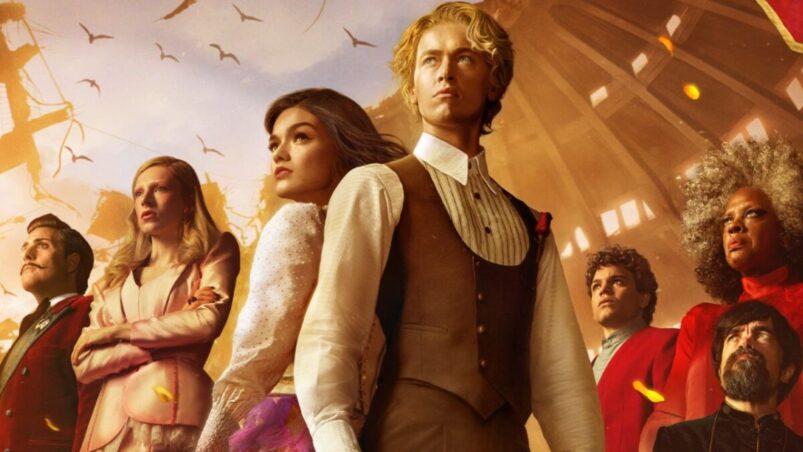The Hunger Games: The Ballad of Songbirds and Snakes wastes no time setting its tone. The film opens in “the dark days” of the civil war in the dystopian future North America of Panem where two children scrounge for scraps of food before witnessing a man hack another’s arm off for sustenance. It’s one of a few moments of surprisingly intense violence that successfully establishes the stakes of the story early on.
That story, adapted from the 2020 book of the same name by original Hunger Games author Suzanne Collins, follows a young Coriolanus Snow (Tom Blyth) as he’s tasked with mentoring Hunger Games tribute Lucy Gray Baird (Rachel Zegler) through the lead up to the games, the events of the games, and their fallout; each told in their own title card-marked part.
The first of those three parts stands alongside the best of the original films, as Snow offers new ideas to gamemaker Dr. Volumnia Gaul (a scene-stealing Viola Davis) to ensure that the people of the wealthy and victorious capitol watch the games. The first third of the film goes deep on what has always been the franchise’s greatest strength: the focus on propaganda. It’s a series about shaping and manipulating public opinion, and the gamesmanship of that manipulation is where this newest entry shines. Not only as a standalone film, but also as a prequel to the original films, showing how the games developed into a must-watch spectacle by manufacturing parasocial relationships with the tributes.
That shine wears off a bit once the games begin and the focus shifts from the behind the scenes action of strategizing to the on camera action of, well, action. Director Francis Lawrence delivers solid scenes of chaotic combat in the arena, but the film begins to feel a bit repetitive in its second part as chaos erupts, dies down, and erupts again. It also feels as though Lawrence and cinematographer Jo Willems focused more on moments and images than exciting fight scenes, creating several striking images during the games that emphasize their role as part of a propaganda machine.
When a third title card appears after the end of the games, around an hour and forty five minutes into the film, it’s more daunting than exciting. This final section follows Coriolanus into the heart of an oppressed district and becomes a small-scale Coriolanus Snow origin story as opposed to the origin story of the games. Here we see the young man begin a romance, face the brutal realities of capitol rule on the people of the districts, and make life-altering decisions, for himself and others. It’s engaging stuff, so much so that I wish it had more time to breathe.
It’s sometimes difficult to parse whether feeling a film should have been two films is a complaint or a compliment. After splitting the final book of the original trilogy into two films, it’s unclear why that approach wasn’t taken here. The third part of The Ballad of Songbirds and Snakes blows through plot and emotional beats in a way that begs for its own feature, but that feeling of wanting more speaks to the quality of what is here.
READ NEXT: 12 Movies Like The Hunger Games to Check Out
Some of the coverage you find on Cultured Vultures contains affiliate links, which provide us with small commissions based on purchases made from visiting our site.


